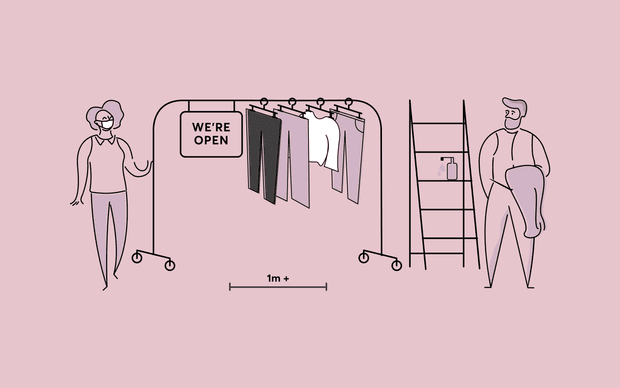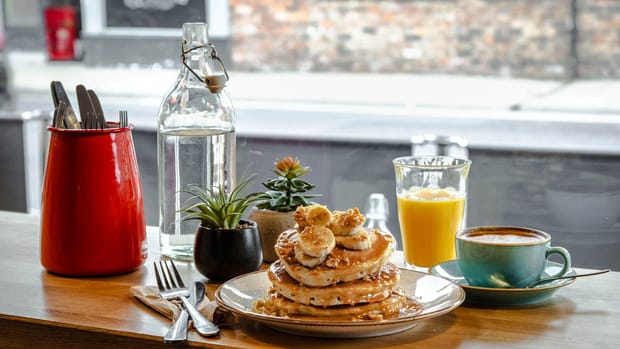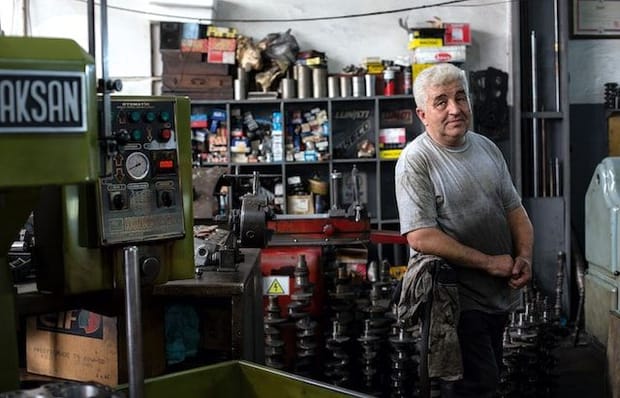The past few months have been catastrophic for most retailers. Hit with not only forced store closures, but also cautious consumers reducing their outgoings, times are tough — particularly for retailers on the high street.
Big names such as Cath Kidston, Oasis and Warehouse have entered administration, but countless smaller retailers are struggling too — and redundancies are expected to increase significantly as the government’s furlough scheme is phased out.
In short, the first half of 2020 has been the toughest period for retailers in decades.
But with non-essential shops now able to open across most of the UK, are there finally some signs of recovery? And, while we’re being cautiously optimistic, we’ll also look at some of the positives that came out of the lockdown for retailers — which may be more significant than is first apparent.
Retail rebounds
By the start of April, worked shifts by RotaCloud’s retail customers fell by over 70% from their pre-COVID levels. Since then, we’ve seen only a gradual increase in shifts worked in retail – until recently.
The graph below shows the number of shifts that RotaCloud users in the retail sector have clocked in to over the past few months. In other words, it estimates how many shifts have been worked in retail over the past quarter. Bear in mind that the vast majority of RotaCloud customers are based in the UK.
Our data shows a significant increase of shifts scheduled from the start of June, aligning with the reopening of shops in England and Northern Ireland, and later Wales and Scotland. Retail shifts are now approaching 60% of their pre-pandemic level.
The other notable recent development is the government’s relaxing of the two-metre rule to ‘one metre plus’ from 4th July. This will more than double the capacity of many shops, and give retailers more space to work with in terms of store layout and queues — but you will have to make the space safer by offering hand sanitiser to customers, and/or requiring customers to wear masks, for example.
Lockdown silver linings
The government regulating for the closure of the retail industry may seem about as bleak as it can get, but if you look very closely, there were some bright spots amidst the gloom of lockdown.
First of all, the lockdown required retailers to stop, plan, and implement new safety measures. It gave stores the time to carry out risk assessments, learn lessons from essential retailers, install signage, screens, and sanitiser stations in a safe and methodical way, not to mention training staff on things like PPE usage and other safety precautions.
Second, the lockdown has driven even the most traditional of retailers to expand their online offerings. From local chippies launching apps to high-end tailors selling face masks in new online shops, many different types of businesses are moving elements of their offering online — at least temporarily.
This new foray into the digital world will give small retailers some stability. Even if there’s a second national or local lockdown, or customers don’t return to the high street in quite the same numbers as before, online options will always be there — not everything will be lost.
Finally, and most significantly, there’s never been more goodwill for local shops.
It all started with the initial wave of ‘panic buying’ at bigger supermarkets. Empty shelves caused shoppers to look for alternative sources of goods a little closer to home. Corner shops, farm shops, world food stores, markets, and veg box suppliers all saw boosts to business, and trade suppliers turned to servicing customers directly to capture some of this demand.
Once lockdown was underway, many of us looked to local shops again to avoid the stress and hassle of visiting bigger retail parks and supermarkets. High street hardware stores, butchers, and takeaways became invaluable, and we saw local businesses supporting their respective communities by delivering food to vulnerable people and key workers.
Non-essential retailers appealed to local trade too, by offering free delivery within local postcodes, often using cycle couriers or low-emission vans. We also bought gift vouchers and online experiences to help our favourite restaurants make it through lockdown.
All in all, there’s a new appreciation for local businesses and their importance to the community — and that represents a significant opportunity for retailers.
According to research by Finder.com [pdf], the top reasons shoppers have for visiting local stores more are to avoid long queues, avoid crowds, reduce the need for travel, and simply wanting to support local businesses. Over a third of shoppers said they’d continue to use local shops more frequently post-lockdown.
Looking forward
Clearly we’re not saying that everything’s rosy in retail. Even if everything returned to normal instantly, many retailers would still be focusing on survival rather than success. After all, the old challenges faced by retail (Brexit, business rates, online competitors) haven’t gone away.
Realistically, however, returning to normal will take months — or perhaps years. There are plenty of ‘new’ challenges retailers need to contend with post-lockdown too, such as limits on capacity, a lack of ‘social shopping’, and of course, continued uncertainty — particularly leading up to the Christmas shopping season.
But during this crisis, retailers have had the time to take a step back and review their operations, introducing new tech and processes to improve their resilience. And with support for local businesses so high, there are plenty of customers out there who are actively looking to spend their hard-earned cash at smaller retailers.
The uncertainty of what lies in store for the rest of the year is, however, difficult to contend with. Yes, there could be a second wave, and we could face no-deal Brexit. But equally, we could be completely back to normal by Christmas — only time will tell.





